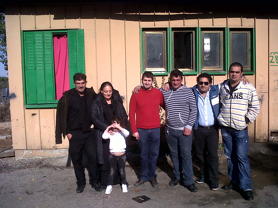Social inclusion[editar]
Spanish Roma community is the most important ethnic minority and despite the six centuries of permanence , can not be said to have had a process of successful social integration, but rather the contrary, the path has many gaps and unanswered questions.
In the last 30 years the Spanish Roma population has experienced a significant improvement in their social situation, but still remains a comunity suffering situations of discrimination and a quialiry of life level lower than the average of the whole of Spanish society.
Since the 80s, Spain starts to develop policies that show the welfare state, including universal and free access to health and education and social housing plans for people with few resources policies. These measures were aimed for the entire population and therefore also the Roma population could benefit from them, gradually improving their health, housing and education and thus their social inclusion.
As for specific measures aimed for social inclusion of the Roma, the implementation of the Roma Development Programme in 1989 and the creation of the State Council of the Roma People in 2005 are decisive instruments to combat exclusion Roma people through the collaboration of the State, both with autonomous communities and organizations with Roma associations.
With these tools, social welfare policies have promoted the improvement of the quality of life of the Roma population and have tried to combat discrimination for Roma to participate in society as full citizens.
In recent years these measures have been complemented by the adoption of the Action Plan for the Development of the Roma Population 2010-2012 and the Strategy for Social Inclusion of Roma in Spain 2012-2020, as well as with the various Regional Plans supporting the Roma, or successive National Action Plans for Social Inclusion approved in Spain since its entry into the EU, which have also included specific measures for the Roma population.

- Resources Resources on Social Inclusion







